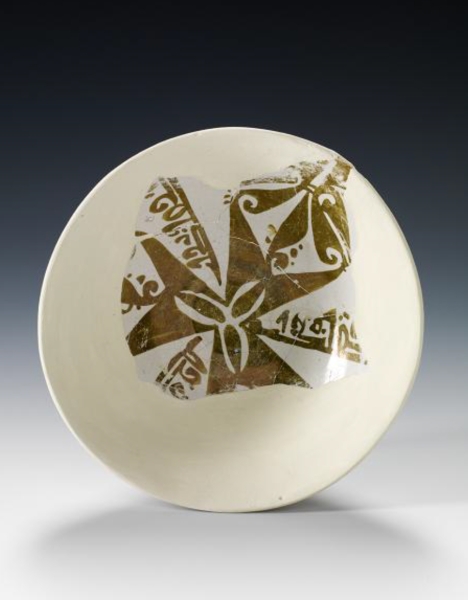
The Ancient Ceramic Dish is an archaeological artifact consisting of a fragment from the base and body of a dish made of ceramic with a metallic luster. Both surfaces feature inscriptions and botanical decorations in an olive-green hue. It was discovered in al-Mabiyat, a village in AlUla Governorate, part of al-Madinah al-Munawwarah Province in the Kingdom of Saudi Arabia. The site is located approximately twenty km from AlUla and about three hundred km north of al-Madinah al-Munawwarah.
History of the ancient ceramic dish
The ancient dish dates back to the Islamic period of the tenth century CE. It was used as a tableware item and was discovered as part of the results from archaeological survey and excavation efforts carried out by the antiquities and museums sector in Saudi Arabia over the past years. These efforts uncovered the remains of a fully walled city, among a collection of discoveries made by Saudi archaeologists and scientific expeditions across Saudi Arabia.
The base of the ancient ceramic dish has a diameter of 8.3 cm at the edge and a thickness of five mm. The dish is displayed at the Saudi National Museum in Riyadh and was selected to be part of a diverse collection of archaeological discoveries from Saudi Arabia showcased in the Archaeological Masterpieces Through the Ages Exhibition.
Significance of the ancient ceramic dish
The ancient ceramic dish, belonging to the metallic luster pottery category, showcases the potter’s expertise and craftsmanship in decoration by incorporating abstract botanical elements interwoven with inscriptions in the ornamental Kufic script. It also reflects the cultural interactions between the Arabian Peninsula and neighboring regions such as Egypt and Iraq. The ancient ceramic dish is registered under number 1034.
Related quizzes
Related articles

